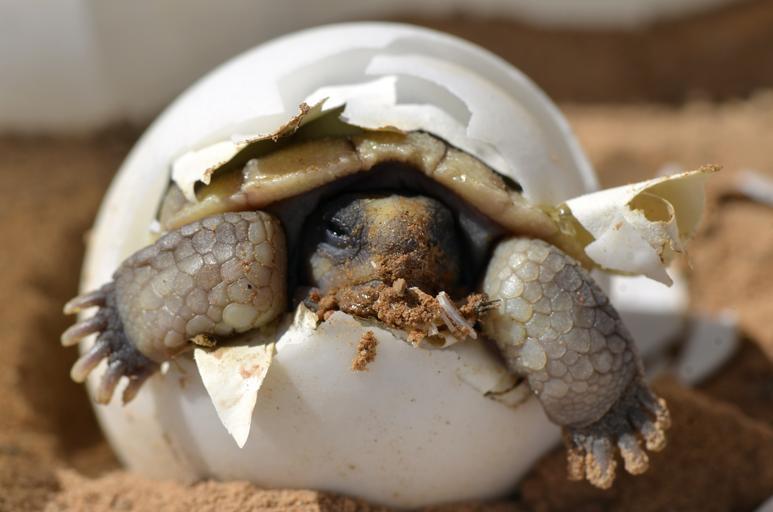MAKE A MEME
View Large Image

| View Original: | Baby Desert Tortoise (16490346262).jpg (4928x3264) | |||
| Download: | Original | Medium | Small | Thumb |
| Courtesy of: | commons.wikimedia.org | More Like This | ||
| Keywords: science usgs biology tortoise turtle environment conservation egg birth baby cute food Baby Desert Tortoise — Here's your &quot;awwwwwwww, so cute!&quot; moment for the day...nothing tops this one. Here we see a a desert tortoise (Gopherus agassizii) hatching from its egg, as photographed by one of our USGS scientists at the Western Ecological Research Center. USGS studies the life history and ecology of the desert tortoise, which is a federally listed threatened species only found in the Mojave Desert. Young tortoises are especially prone to predators like dogs and ravens, whose numbers can increase around areas of human activity and structures. Adult tortoises can be killed by car traffic, ingesting trash, and wildfires, and are affected by loss of habitat from urban and industrial development, cutting short their potential lifespan of 100 years. USGS research on desert tortoises are helping federal and state management agencies improve land use and conservation plans, and balance the recovery of this threatened species with other resource use priorities in the Mojave Desert landscape. Watch a video of a Desert Tortoise hatching at bit.ly/USGSTortoise. Photo Credit: K. Kristina Drake, USGS. Baby Desert Tortoise — Here's your "awwwwwwww, so cute!" moment for the day...nothing tops this one. Here we see a a desert tortoise (Gopherus agassizii) hatching from its egg, as photographed by one of our USGS scientists at the Western Ecological Research Center. USGS studies the life history and ecology of the desert tortoise, which is a federally listed threatened species only found in the Mojave Desert. Young tortoises are especially prone to predators like dogs and ravens, whose numbers can increase around areas of human activity and structures. Adult tortoises can be killed by car traffic, ingesting trash, and wildfires, and are affected by loss of habitat from urban and industrial development, cutting short their potential lifespan of 100 years. USGS research on desert tortoises are helping federal and state management agencies improve land use and conservation plans, and balance the recovery of this threatened species with other resource use priorities in the Mojave Desert landscape. Watch a video of a Desert Tortoise hatching at bit.ly/USGSTortoise. Photo Credit: K. Kristina Drake, USGS. Baby Desert Tortoise — Here's your "awwwwwwww, so cute!" moment for the day...nothing tops this one. Here we see a a desert tortoise (Gopherus agassizii) hatching from its egg, as photographed by one of our USGS scientists at the Western Ecological Research Center. USGS studies the life history and ecology of the desert tortoise, which is a federally listed threatened species only found in the Mojave Desert. Young tortoises are especially prone to predators like dogs and ravens, whose numbers can increase around areas of human activity and structures. Adult tortoises can be killed by car traffic, ingesting trash, and wildfires, and are affected by loss of habitat from urban and industrial development, cutting short their potential lifespan of 100 years. USGS research on desert tortoises are helping federal and state management agencies improve land use and conservation plans, and balance the recovery of this threatened species with other resource use priorities in the Mojave Desert landscape. Watch a video of a Desert Tortoise hatching at <a href="http://bit.ly/USGSTortoise" rel="nofollow">bit.ly/USGSTortoise</a>. Photo Credit: K. Kristina Drake, USGS. baby cute turtle birth egg tortoise conservation science environment biology usgs | ||||